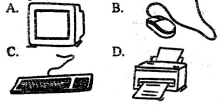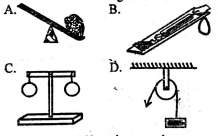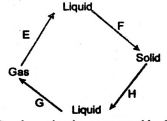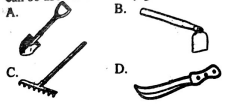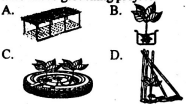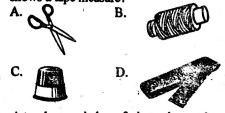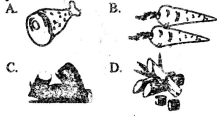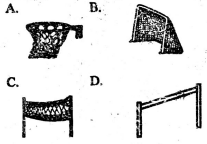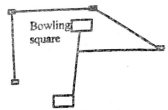QUESTIONS
- Which of the following lists consists of materials that decompose easily only?
- Metal, wood, leaf.
- Plastic, maize stalk, nail.
- Leaf, wood, maize stalk.
- Pin, log, wood.
- Which one of the following is not a waterbone disease?
- Malaria.
- Typhoid
- Cholera.
- Bilharzia.
- Which of the following computing devices can be double clicked to open an icon on a computer?
- In which of the following levers do we get the load between the effort and the fulcrum?
- Clawhammer.
- Broom.
- Fishing rod.
- Wheelbarrow.
- Which of the following shows a crowbar?
- One afternoon, Kantai was typing an e- mail on the computer. In which part of the computer was his work displayed? On the
- CPU.
- keyboard
- printer.
- VDU.
- In a certain habitat, an animal with the following characteristics was spotted:
- Its body was covered with fur.
- It had a constant body temperature.
- It was an egg-laying mammal.
- It had mammary glands.
Which of the following animals was likely to have been seen?- Bat.
- Bird.
- Spiny anteater.
- Tortoise.
- The following are steps when typing a document but not in their correct order:
- Edit
- Type
- Save
- Print
Which of the following is the correct order of the steps?- i, ii, iii, iv
- i, ii, iv, iii
- ii, iii, i, iv
- ii, i, iii, iv
- The diagram below shows the breathing system.
Which two parts perform the same function?- Q and R
- P and O
- R and P
- Q and O
- The diagram below represents the digestive system.
Digestion ends in the part marked- P
- O
- M
- N
- Which of the following sense organs is responsible for sight?
- Ears.
- Nose
- Eyes.
- Skin.
- A group of learners made a set up like the one shown below.

What was the group of learners investigating?- Heat transfer in gases.
- Convection in liquids.
- Heat transfer in solids.
- Convection in gases.
- Which of the following phases of the moon shows the new moon?
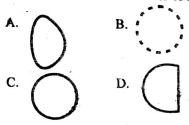
- Study the illustration below.
Condensation is represented by letter- H
- F
- E
- G
- Which of the following can be used to detect acids and bases?
- Cotton wool.
- Manila paper.
- Copper wire.
- Litmus paper.
AGRICULTURE.
- Which one of the following may not be needed when making a scarecrow?
- Old clothes.
- Strings
- Sticks.
- Glue.
- Which one of the following is not a way of conserving water in the farm?
- Pruning.
- Shading
- Mulching.
- Cover-cropping.
- Taking seedlings from a nursery bed to the main farm is called
- transplanting.
- transporting.
- transforming.
- translocating.
- Which of the following gardening tools can be used to collect dry grass?
- Which of the following crops is correctly matched with its type?
- Onion - vegetable
- Kales - cereal
- Wheat - legume
- Cucumber - fruit
- All the following are indigenous food crops. Which one is not?
- Yams.
- Cassava
- Sweet.
- Irish potatoes.
- Choose a pair of domestic animals that provides only one food product to human beings.
- Sheep and goats.
- Camels and cows.
- Pigs and sheep.
- Donkeys and dogs.
- Fruit trees in the nursery bed can be cared for by all the following ways except
- watering
- harvesting
- weeding.
- thinning.
- Which of the following shows an innovative gardening project?
- Which one of the following is not an example of poultry?
- Duck.
- Scarecrow.
- Turkey.
- Goose.
HOMESCIENCE
- A launder saw a care label like the one drawn below on a garment.
What does the care label mean?- Use hot iron.
- Use cold iron.
- Do not iron.
- Iron in a shade.
- A certain patient was diagnosed with te following signs and symptoms.
- Change in skiss and hair colour
- Pot belly.
- Retarded growth.
- Swollen body parts.
The disease described above can best be prevented by eating plenty of- maize.
- vegetables.
- eggs.
- fruits.
- Which one of the following is not a nutritional deficiency disorder?
- Kwashiorkor.
- Typhoid
- Rickets.
- Marasmus.
- Which of the following needle work tools shows a tape measure?
- A teacher carried a sufuria to class and asked some learners what the sufuria was made of:
Kombo: plastic
Chonjo: wood
Gombo: clay
Pondo: metal
Who among the learners was correct?- Kombo
- Gombo
- Pondo
- Chonjo
- Which one of the following foods cannot be cooked using dry fat frying method?
- Maize.
- meat
- Fish.
- Bacon.
- The following changes take place in pre- adolescent girls except
- broadening of hips.
- growth of hair under the, arms.
- onset of wet dreams.
- breast development.
- Cereals can be preserved in
- refrigerators.
- water.
- polythenes.
- sacks.
- Which of the following foods contains proteins?
- Below is a kitchen equipment.
The equipment above can be cleaned using- charcoal powder.
- steelwool.
- egg shells.
- powdery soil.
PHYSICAL HEALTH EDUCATION.
- Elongated start and medium start are normally applied in
- kabaddi.
- rounders
- frisbee.
- athletics.
- When practicing handwalk, the weight of the body rests on the
- feet.
- hands
- knees.
- shoulders.
- The area where high jumpers land after the flight is called the
- runway.
- take off board.
- landing pit.
- loading area.
- Which one of the following can be used for hand juggling?
- Sand
- Sawdust
- Rope
- Ball
- Below is a player practising a game.
The player drawn above is likely to be practising- Javelin.
- Shotput.
- Relays.
- Athletics.
- Which of the following equipment is associated with volleyball?
- Which one of the following is not a reason for drinking water during games? Water
- regulates the rate of our heartbeat.
- lubricates out joints.
- forms saliva.
- regulates the body temperature.
- All the following are related to frisbee. Which one is not?
- Double bounce.
- One-handed rim catch.
- Fore hand throw.
- Back hand throw.
- During the kneeling overhead throw, in which position is the ball?
- In front of the thrower.
- Behind the thrower.
- Above the thrower's head.
- Between the thrower's legs.
- Study the diagram below.
The illustration above shows a- rounders pitch.
- discus facility.
- javelin sector.
- shotput sector.
- Which one of the following is not a component of health related fitness?
- Muscular strength.
- Cardiorespiratory endurance.
- Mental preparation.
- Flexibility.
- Heel taps and skiers are techniques both applied in
- standing discus.
- rope work.
- standing shotput.
- kabaddi.
- In softball, what does the catcher use to protect the hands?
- Practice cones.
- Smitts.
- Sheen guards.
- Goggles.
- A relay baton can be improvised using
- maize stalks.
- plasticine.
- saw dust.
- ash.
- Which one of the following items cannot be found in the first aid kit?
- Scissors
- Pliers
- Bandages
- Painkillers

MARKING SCHEME
- C
- A
- B
- D
- A
- D
- C
- D
- B
- B
- C
- C
- B
- C
- D
- D
- A
- A
- C
- A
- D
- C
- B
- C
- B
- C
- C
- B
- D
- C
- A
- C
- D
- A
- A
- D
- B
- C
- D
- A
- C
- A
- A
- C
- A
- C
- B
- B
- A
- B
Join our whatsapp group for latest updates
Tap Here to Download for 30/-
Get on WhatsApp for 30/-
Download Integrated Science Questions and Answers - Grade 6 Opener Exams Term 1 2023 Set 1.
Tap Here to Download for 30/-
Get on WhatsApp for 30/-
Why download?
- ✔ To read offline at any time.
- ✔ To Print at your convenience
- ✔ Share Easily with Friends / Students

